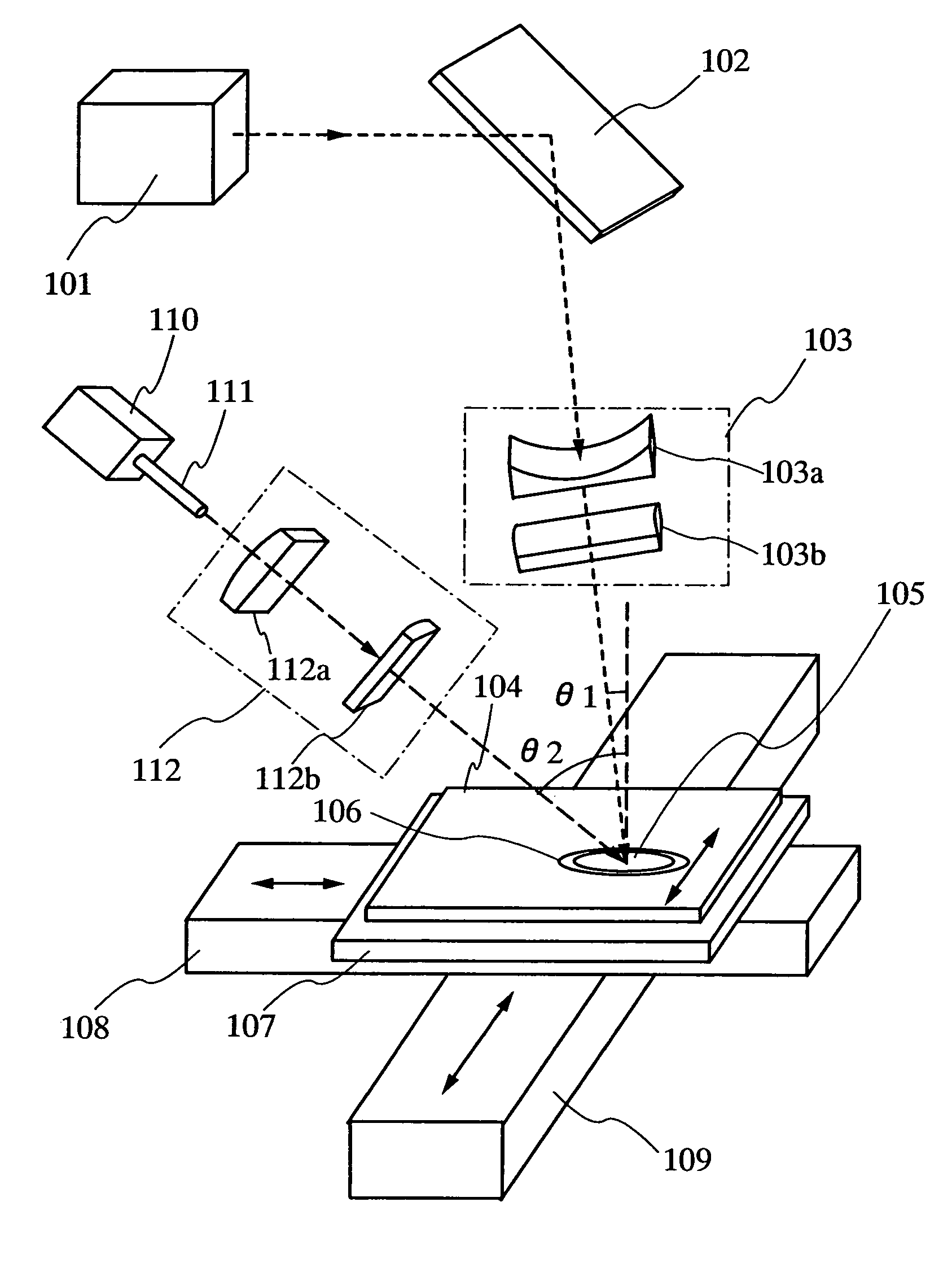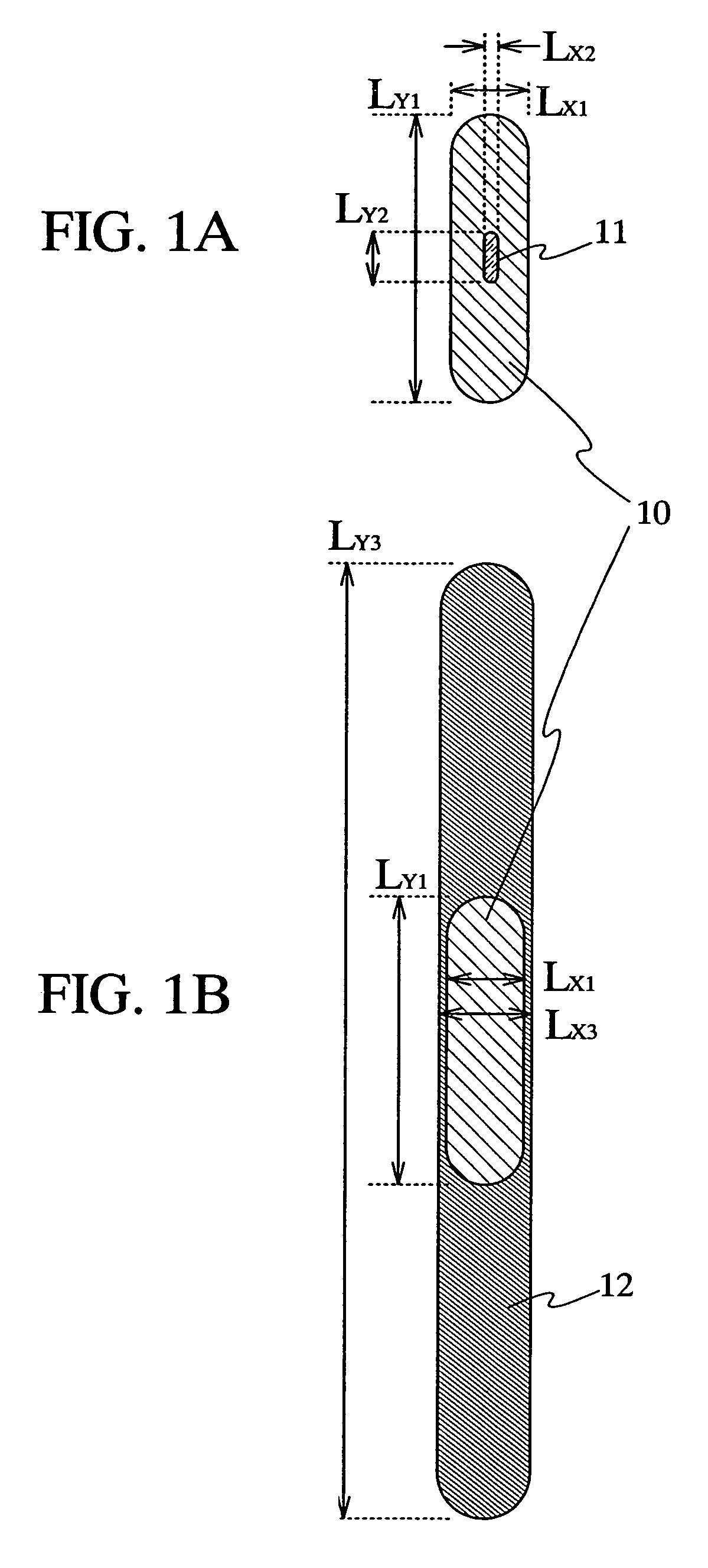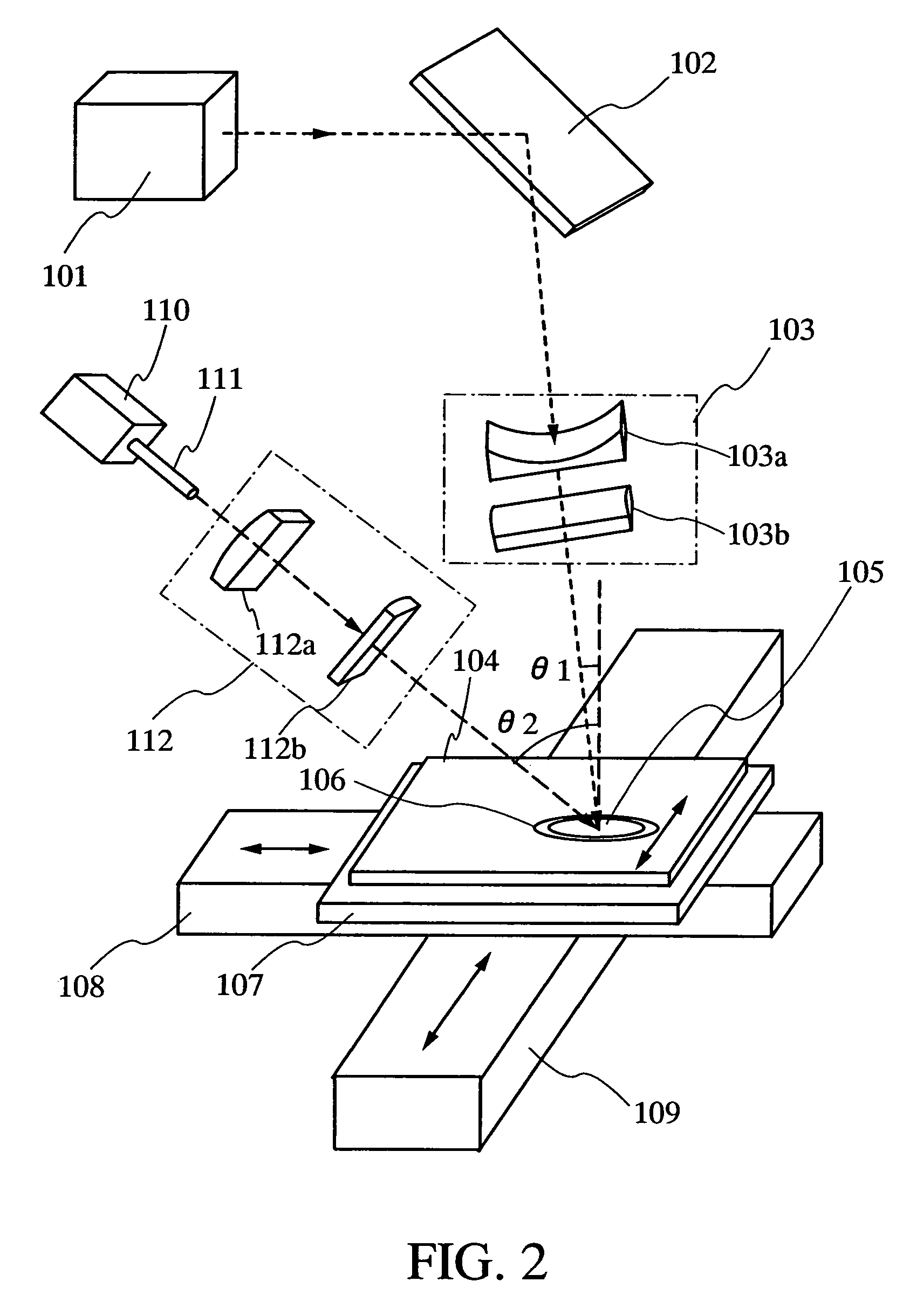Laser irradiation apparatus, laser irradiation method, and method for manufacturing a semiconductor device
- Summary
- Abstract
- Description
- Claims
- Application Information
AI Technical Summary
Benefits of technology
Problems solved by technology
Method used
Image
Examples
embodiment mode 1
The structure of the laser irradiation apparatus according to the present invention is explained with using FIG. 2.
Reference numeral 101 denotes a pulsed laser oscillator, and a Nd: YLF laser that outputs 6 W is used as the laser oscillator 101 in this embodiment mode. The laser oscillator 101 operates in a TEM00 mode and includes the non-linear optical element to convert the wavelength of the laser beam into the second harmonic. The higher harmonic is also available but the second harmonic is superior in terms of the energy efficiency to the other higher harmonics. The frequency is 1 kHz and the pulse width is 60 ns approximately. In this embodiment mode, the solid laser that outputs 6 W approximately is used but a large-scaled laser oscillator that outputs as much as 300 W, for example aXeCl excimer laser, can be also employed.
It is noted that the non-linear optical element may be provided inside the resonator included in the oscillator or the resonator equipped the non-linear opt...
embodiment mode 2
In this embodiment mode, the method for irradiating a laser beam and the method for manufacturing a semiconductor device according to the present invention is explained with FIGS. 4A to 4C.
First of all, a base film 501 is formed on a substrate 500 as shown in FIG. 4A. A glass substrate such as a barium borosilicate glass, an aluminum borosilicate glass or the like, a quartz substrate, an SUS substrate or the like can be given as the substrate 500. Besides, though the substrate comprising the plastic typically polyethilene terephthalate (PET), polyethersulfone (PES), and polyethylene naphthalate (PEN) or acryl synthetic-resin with flexibility such as acryl or the like is inferior to the substrate above in terms of the resistance against the heat, it can be utilized provided that the substrate can resist against the heat generated in the manufacturing processes.
The base film 501 is provided in order to prevent that alkaline-earth metal or alkaline metal such as Na comprised in the sub...
embodiment 1
This embodiment shows one example of the laser irradiation apparatus applying the present invention.
FIG. 5 shows a structure of the laser irradiation apparatus in this embodiment. In this embodiment, a first pulsed laser beam having a wavelength of visible light or a shorter wavelength than that of visible is emitted from a laser oscillator 1520. And second CW laser beams are emitted from two laser oscillators 1500 and 1501.
In this embodiment, an excimer laser is used as the laser oscillator 1520, which outputs the energy of 1 J per a pulse, with a pulse width of 30 ns approximately, that is to say the laser oscillators 1520 outputs 30 MW per unit time. In addition, both of the laser oscillators 1500 and 1501 are YAG lasers which output 10 kW respectively.
After the first laser beam emitted from the laser oscillator 1520 is reflected by the mirror 1523, the first laser beam is shaped into rectangular, elliptical or linear through the optical system 1524 and is irradiated to the proce...
PUM
| Property | Measurement | Unit |
|---|---|---|
| Wavelength | aaaaa | aaaaa |
Abstract
Description
Claims
Application Information
 Login to View More
Login to View More - R&D
- Intellectual Property
- Life Sciences
- Materials
- Tech Scout
- Unparalleled Data Quality
- Higher Quality Content
- 60% Fewer Hallucinations
Browse by: Latest US Patents, China's latest patents, Technical Efficacy Thesaurus, Application Domain, Technology Topic, Popular Technical Reports.
© 2025 PatSnap. All rights reserved.Legal|Privacy policy|Modern Slavery Act Transparency Statement|Sitemap|About US| Contact US: help@patsnap.com



